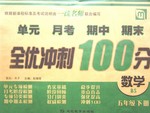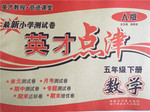题目内容
The forces that make Japan one of the world's most earthquake-prone (有…倾向的) countries could become part of its long-term energy solution.
Water from deep below the ground at Japan's tens of thousands of hot springs could be used to produce electricity.
Although Japanese high-tech companies are leaders in geothermal (地热的) technology and export it, its use is limited in the nation.
"Japan should no doubt make use of its resources of geothermal energy," said Yoshiyasu Takefuji, a leading researcher of thermal-electric power production.
The disastrous earthquake and tsunami on March 11, 2011 caused a reaction against atomic power, which previously made up 30 percent of Japan's energy needs, and increased interest in alternative energies, which account for only 8 percent.
Artist Yoko Ono has called on Japan to explore its natural energy, following the example of Iceland which uses renewable energy for more than 80 percent of its needs.
For now, geothermal energy makes up less than 1 percent of the energy needs in Japan, which has for decades relied heavily on fossil fuels and atomic power.
The biggest problem to geothermal energy is the high initial cost of the exploration and constructing the factories. Another problem is that Japan's potentially best sites are already being developed for tourism or are located within national parks where construction is forbidden.
"We can't even dig 10 cm inside national parks.” said Shigeto Yamada of Fuji Electric, adding that regulations protecting nature would need to be relaxed for geothermal energy to grow. Researcher Hideaki Matsui said, “Producing electricity using hot springs is a decades-long project. We also have to think about what to do for now as energy supplies will decrease in the short term.”
The Earth Policy Institute in Washington, US, believed Japan could produce 80,000 megawatts(兆瓦)and meet more than half its electricity needs with geothermal technology.
Japanese giants such as Toshiba are already global leaders in geothermal technology, with a 70 percent market share. In 2010, Fuji Electric built the world's largest geothermal factory in New Zealand.
1.What would be the best title for the text?
A. Alternative energies in Japan
B. Japan thinks of geothermal energy
C. Japan takes the lead in geothermal technology
D. World's largest geothermal plant
2.What percentage of Japan's energy needs is geothermal energy?
A. About 8%. B. Around 30%.
C. Below 1%. D. Over 80%.
3.According to Shigeto Yamada, the growth of geothermal power in Japan needs ____.
A. high technology B. financial support
C. local people's help D. a change of rules
4.Geothermal energy is considered as a long-term program by _____.
A. Hideaki Matsui B. Yoshiyasu Takefuji.
C. Shigeto Yamada D. Yoko Ono
5.It can be learned from the last two paragraphs that _____.
A. the world's biggest geothermal plant was built by America
B. Japan will not export its geothermal technology
C. it is hard to find geothermal energy in Japan
D. the potential of Japan's geothermal energy is great
1.B
2.C
3.D
4.A
5.D
【解析】
本文为一篇科普说明文。让日本经常地震的一些自然力有可能会被转化成日本长期可持续利用的清洁能源,即地热。本文对其进行了详细介绍。
1. also have to think about what to do for now as energy supplies will decline in the short term”,以及对全文的整体理解可知,本文主要讲的“日本正在考虑如何使用地热”的问题。故选B。
2. now,geothermal energy makes up less than 1 percent of the energy needs in Japan...”。故选C。
3. that regulations protecting nature would need to be relaxed for geothermal energy to grow”可知。故选D。
4. Hideaki Matsui said,Producing electricity using hot springs is a decadeslong project...”可知。故选A。
5.
考点:考查说明文阅读。

 全优冲刺100分系列答案
全优冲刺100分系列答案 英才点津系列答案
英才点津系列答案 红果子三级测试卷系列答案
红果子三级测试卷系列答案